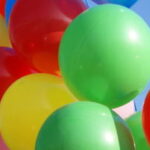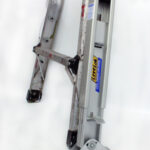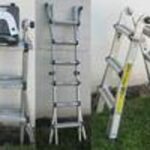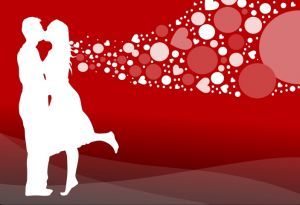Balloon Drop Experiment
Gravity is the attraction of two bodies. Earth’s gravity keeps plants, animals and people from flying off into space. Test the force of gravity by filling balloons with water. First, throw the water-filled balloons as high as possible. Then from a ladder or chair or other high surface drop water-filled balloons. Use balloons filled with different amounts of water. Check to see which balloons hit the ground first or if all the balloons hit about the same time. Try from different heights. You can even have contests among the children. Whether throwing up or down, balloons will crash and splat. These are fun gravity experiments for kids. (Make sure children are ready to get wet.)
Chase the Pepper Experiment
Start this pepper experiment by filling a bowl with water–otherwise known as H2O. (This means water consists of two hydrogen atoms and one of oxygen.) Add a sprinkling of black pepper enough to cover the surface of the water. The pepper floats on the water. Now add a drop or two of soap. Dish detergent soap works very well for this water experiment. Suddenly the pepper spreads apart like magic and some falls to the bottom of the bowl. Allow the children to repeat this experiment several times as you explain.
The water has an electrical charge of positive, the hydrogen, and negative, the oxygen, so that water molecules actually hold together almost like tiny magnets. The pepper alone cannot break the hold of these water molecule magnets on one another and simply lies on the surface of the water. In fact, because these tiny magnet-like molecules make a tight surface, very light bugs can walk across water like animals and humans do on land. Soap, however, has a component that breaks apart the molecules, unlocking the water magnets, scattering the pepper. This allows the pepper to sift to the bottom of the bowl.
Oil and Water Experiment
For this oil and water experiment, use a clear glass, filling it half full of water. Add salt and stir until the salt dissolves in the water. Taste the water. It is now salt water. Eventually the salt settles into the bottom of the glass.
Using another clear glass, add water until the glass is one-third full. Let the water settle. Add the same amount of vegetable oil to make the glass two-thirds full. Watch the layers settle. The oil doesn’t mix with the water. Instead it sits in a layer on top of the water.
Add salt to the oil and watch salt drag oil molecules down into the water. Salt is heavier than water and will dissolve in water. Oil is lighter than water and sits on top of the water surface. When salt sticks to the oil, it drags the oil molecules under the water. Once the salt dissolves, it releases the oil, which floats back to its original position.
Children enjoy learning with water experiments.
Becky Rupp, “MAKE A SPLASH! THE SCIENCE OF WATER,” Parent at the Helm





